Social marketplaces are transforming the way consumers shop online. With 63.9% of the world’s population — or 5.24 billion people — using social media, a shift to social-driven commerce is reshaping how consumers interact with brands, pushing businesses to rethink ways to reach and engage their audiences in an increasingly social world.
eMarketer estimates that 45.1% of social media users in the US are also social shoppers and that US social commerce sales are predicted to reach $100 billion in 2026. So if your brand isn’t offering your audience an easy way to shop for your products on their social channels, you’re likely missing out on additional revenue streams that can also build a stronger social community.
What is social shopping?
Social marketplaces are online platforms that blend social media and traditional eCommerce. They allow users to connect, share, and buy products, all without leaving the social platform, and they help businesses seamlessly integrate into users’ scrolling habits, creating an interactive shopping experience and reaching a broader audience. Social marketplaces draw on digital interactions to create a personalized shopping experience that reflects the consumer’s behavior and real-time trends.
Who is shopping on social media?
According to eMarketer, social marketplaces are increasingly capturing the attention of consumers who previously made purchases through social media. Among different age groups, 53% of Gen Z (18–25) respondents report that they’ve made purchases through social media, while Millennials (26-41) follow closely behind at 45%. Over the next decades, as Gen Z assumes the role of primary decision-makers in households, it will be essential for brands to understand how and where to engage with them to drive their eCommerce success.
Social shopping across marketplaces
While a plethora of social media outlets offer shopping across their marketplaces, how users engage on the platform and the type of content they generally see differs slightly for each one. Many social channels allow for products to be discovered, and shopped, through content, with 34% of respondents citing short-form videos as the most helpful content type when searching for products. This preference bolsters the growing influence of platforms like TikTok, Instagram Reels, and YouTube Shorts, where quick-hitting videos often serve as the initial point of contact for discovering new brands and products.
Let’s explore the unique features of major social marketplaces, including how consumers shop on each platform and successful strategies brands are using to engage customers.
Instagram
Brands can integrate their product catalog with their Instagram profile, while users can tap a “Shop” button on a brand’s profile page and browse its shop, which often includes individual posts, reels, and videos where items have been tagged. Instagram shoppers currently spend the most per transaction compared to other social platforms, with 7.6% more shoppers spending $200 or more compared to other platforms. Instagram also had the highest percentage of shoppers who spent more than $700 (8.7%).
Example: Tarte Cosmetics’ Instagram Shop
When Tarte Cosmetics posts a new product or collaboration, or shares a new hack, their team promptly directs users to their Instagram shop within a post. Instagram’s seamless shopping experience allows users to add products to their cart directly from the post without ever leaving the platform. The brand also organizes their shop into collections that are inciting to the audience, including New Arrivals, Best Sellers and products organized into certain price points.
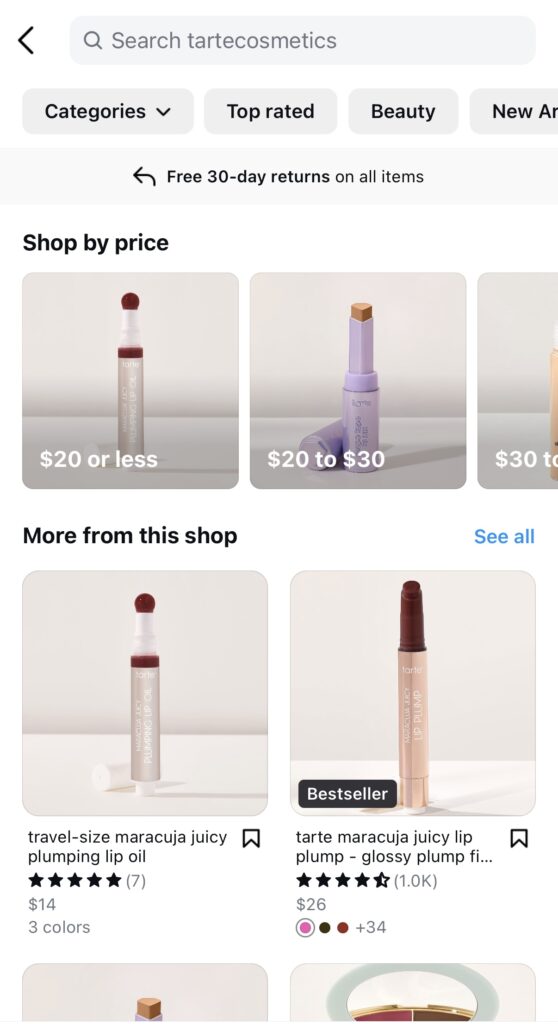
Facebook
With its large user base, Facebook has the most buyers on the platform — 65.2 million in 2024, to be exact. Despite the large audience size, however, buyers do not overindex on purchases in any category compared to other social channels. With that said, Facebook’s marketplace is an opportunity to reach a broad swath of buyers, many of whom are not necessarily looking for only one type of product.
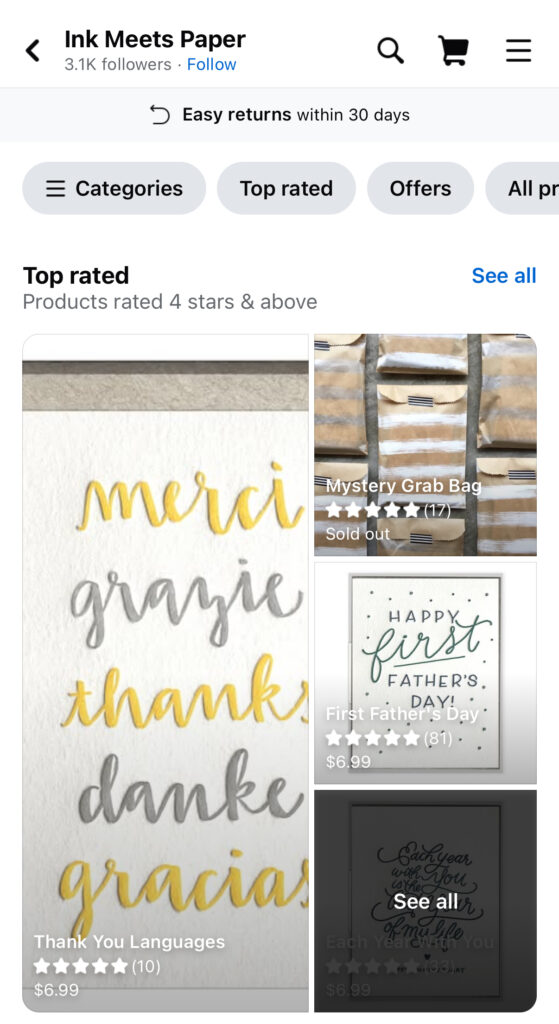
Example: Ink Meets Paper Facebook Shop
On Facebook, Featured Posts allow users to highlight top-performing content. Ink Meets Paper takes advantage of this function to showcase their products in their shop — an approach that highlights product features and facilitates easier shopping through tagged products.
TikTok
Thanks to its unique algorithm that boosts the visibility of viral products, along with the ability for creators to promote a brand’s products to earn commission, TikTok boasts the highest share of active shoppers among social platforms (49.7% made a purchase in the last month). In other words, it’s the ideal social marketplace platform.
Example: Maybelline TikTok Shop
Maybelline links their TikTok Shop to their content and offers creators the opportunity to produce content featuring shoppable products from its shop. By incentivizing their community, Maybelline is able to increase the content on the platform featuring their product, while also increasing awareness and sales.
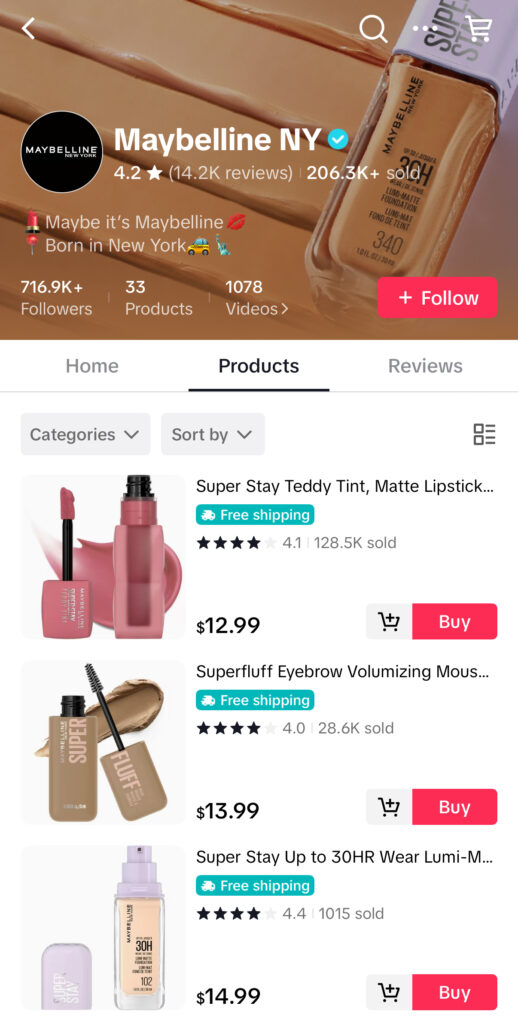
YouTube
Over 30 billion hours of shopping-related videos on YouTube were viewed in 2023, with an additional 25% increase in watch time for videos that help people shop on YouTube. While tagged product carousels have been around for a while, YouTube has also recently introduced Shopping Collections which creators can use to share a catalog of their favorite products or their own products.
Example: Studio McGee & Sydney Morgan
Brands like Studio McGee produces videos and tags products that were featured in the video in a tray directly below the content. Viewers can see when an item is tagged and shop that curated collection, allowing for content to be presented in a way that’s curated for a specific look or use case. This approach can be a way to make house tours, for example, feel more like organic content rather than traditional advertisements.
By leaning into the creator economy, YouTube Shopping Collections help creators curate recommended product pages, like the “Preppy Essentials” list from Sydney Morgan, where the popular social media influencer and makeup artist can highlight recommended products from multiple brands featured in her content.
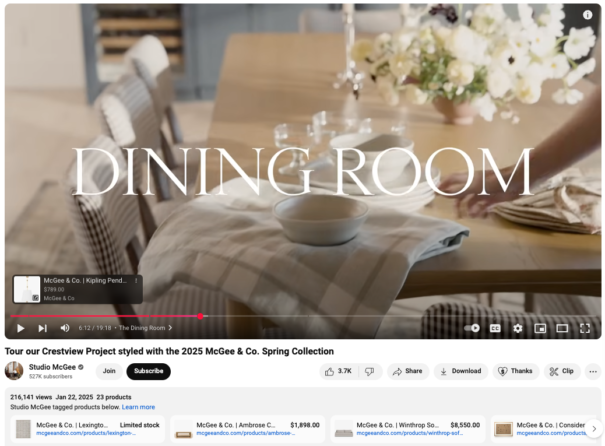
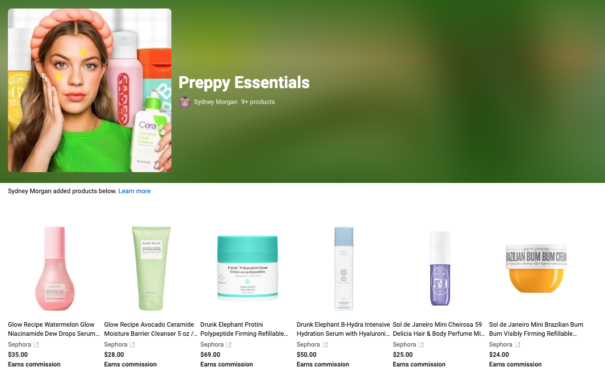
Pinterest
While Pinterest does not have a dedicated marketplace page similar to other platforms, it’s famous for mood boards and wishlists — the perfect place to integrate shopping. The platform offers Product Pins, an option that links to products that users can check out and buy.
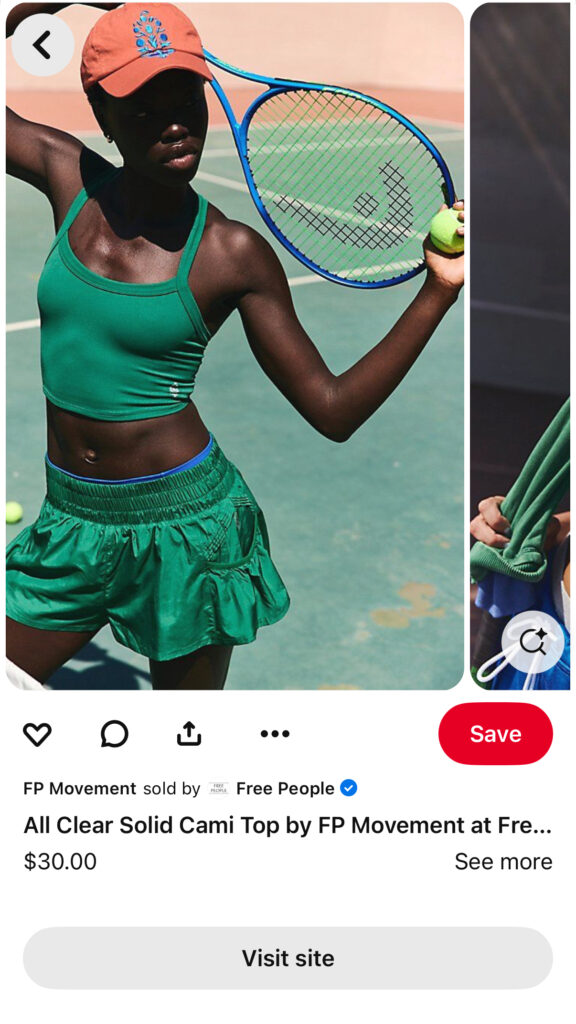
Example: Free People
Free People focuses their Pinterest strategy on curating looks for the occasions they know their audience will gravitate toward. With so many product-related pins out there, this approach offers the information consumers will want to know about each item — name price, reviews, product details, and so on, to ensure that any user can shop when the mood strikes. Additionally, an “Explore” button lets users see a photo and browse similar products. Ensuring that all their products are on Pinterest increases the chances that more Free People products will be shown
What social shopping experiences should you launch?
Ultimately, eCommerce brands looking to sell products and capitalize on the social aspects of platforms can greatly benefit from establishing a presence on all social marketplaces. However, it’s important to consider operational aspects such as your social content strategy, where your target audience is, the ability to automate your product feed, inventory management, fulfillment capabilities, and more.
How to set up your social media shops
Instagram Shop
You will need an Instagram Business account. Set it up within the app and turn on business features or convert your existing account. Then add or sync your product catalog and activate shopping.
Facebook Shop
Visit the Facebook Get Started page and create a shop. You can sync Shopify or other platforms if you are already selling. And if you want to sell on a Facebook Business Page, you can choose your Page or create a new one.
TikTok Shop
TikTok requires verification of your shop and banking information to get started. Afterwards, you can sign into a Business center and add a TikTok Shop.
YouTube Shopping
Meet the YouTube eligibility requirements, then connect your store to YouTube and start tagging products within your video.
Are you interested in optimizing your social presence and setting up a social marketplace? Mindgruve has recently entered into an exclusive partnership with the leading TikTok agency, Outlandish Inc., to bring TikTok Shops to Mexico and bring social selling best practices to our clients. To learn more and start your social commerce strategy, get in touch with us.